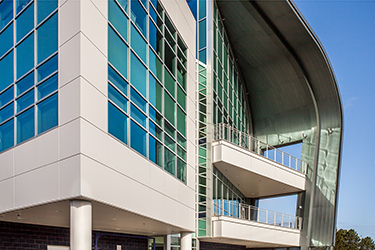|
Subscribe / Renew |
|
|
Contact Us |
|
| ► Subscribe to our Free Weekly Newsletter | |
| home | Welcome, sign in or click here to subscribe. | login |
Architecture & Engineering
| |
 |
October 30, 2014
Survey: PCS Structural Solutions
Specialty: Structural engineering firm focused on Northwest commercial building markets; expertise in education and healthcare
Management: Brian Phair, CEO; Craig Stauffer, president; Jim Collins, executive vice president; Don Scott, vice president and director of engineering
Founded: 1965
Offices: Seattle and Tacoma
2014 revenues: $8 million
Projected 2015 revenues: $8.6 million
Projects: Discovery Hall, University of Washington Bothell; Raisbeck Aviation High School, Tukwila; Swedish Medical Center First Hill transformation, Seattle
Craig Stauffer, president of PCS Structural Solutions, shared his thoughts about advanced delivery methods and what’s next for local construction markets.
Q: Residential high-rise construction has been nonstop in Seattle. Are you tempted to join in?
A: Seattle is booming beyond just residential — developers are showing increased interest in office buildings also. We’ve had many strategic meetings regarding how much time we want to spend in the high-rise market. Numerous general contractors have pushed for our involvement on pursuits over the last year; however, we’re realistic on the amount of expertise and competition.
We have two residential towers in conceptual design, and we are working on a very significant Northwest office building with Wright Runstad. Long-term relationships with clients are our focus — a few taller projects fall out of that every year.
Q: Which sectors do you expect to see expand or shrink?
A: K-12 and higher-education markets were slow during the economic downturn, however the necessity of modernizing their aging facilities and accommodating the expanding population remained unchanged. We expect to see work increase in both of these markets.
Many medical campuses were being “affiliated” over the last few years, and this market is moving back to historic averages of yearly capital improvements.
The large-scale apartment market is at an unbelievable level, however we don’t see it sustaining that pace. Clients of ours such as Olson Kundig Architects are having continued growth in high-end residential around the globe — we expect that to continue.
Q: Technological and project delivery advances are supposed to make the design and construction process more efficient. How has that affected you?
A: We’ve had success with advanced delivery methods such as integrated project delivery (IPD), have completed over 300 projects utilizing building-information modeling (BIM), and recently worked on the Northwest’s first true IPD project for Seattle Children’s Hospital.
When embraced by the entire team the processes are more efficient, produce a better product, and are a lot of fun. However, our design and construction effort is actually increasing on intense BIM/IPD/lean projects due to numerous bid packages and pre-fabrication. We’re staffing projects with more individuals to separate these tasks.
Educated owners understand the value in compensating collaborative teams as construction dollar savings greatly overshadow these upfront tasks.
Q: Has there been a recent project that has given the firm a chance to stretch its capabilities?
A: Building-information modeling has allowed delivery methods to improve significantly, such as design-build now being used on select public projects.
We worked with the University of Washington on one of their first design-build projects, as well as their first full IPD(ish) project. Both proved that collaborative, creative teams can embrace great architecture and provide schedule and cost savings to the public through alternative delivery methods.
Q: What structural design trends are you seeing? Any major advancements?
A: The industry continues to develop new sustainable structural components. Cross-laminated timber looks like a promising system, however manufacturing capabilities must improve and building codes need to adjust for it to be widely implemented.
As far as industry advancements, we’re using performance-based design on many more building types. Historically, this high-end analysis procedure was used primarily on high-rise structures. Medical clients and other long-term building owners, even owners’ insurance agencies, are seeing the benefit of reducing risk and increasing reliability. We have employees on national code panels relating to these discussions, as we see this trend continuing.
Other Stories:
- 5 tools needed to run successful meetings
- Survey: Magnusson Klemencic Associates
- Survey: Graphite Design Group
- Survey: Notkin Mechanical Engineers
- Survey: Walker Macy
- Survey: Callison
- Survey: CollinsWoerman
- Energy-efficient design goes to school
- Is Seattle’s housing market falling into the ‘San Francisco Death Spiral’?
- Lean design shines in tricky healthcare projects
- Commissioning is key to a smooth running central utility plant
- Electronic data loss can become a shocking surprise
- D/B competitions: a high-stakes poker game you can’t win
- Why tomorrow’s engineer needs a different education
- Survey: Driftmier Architects



